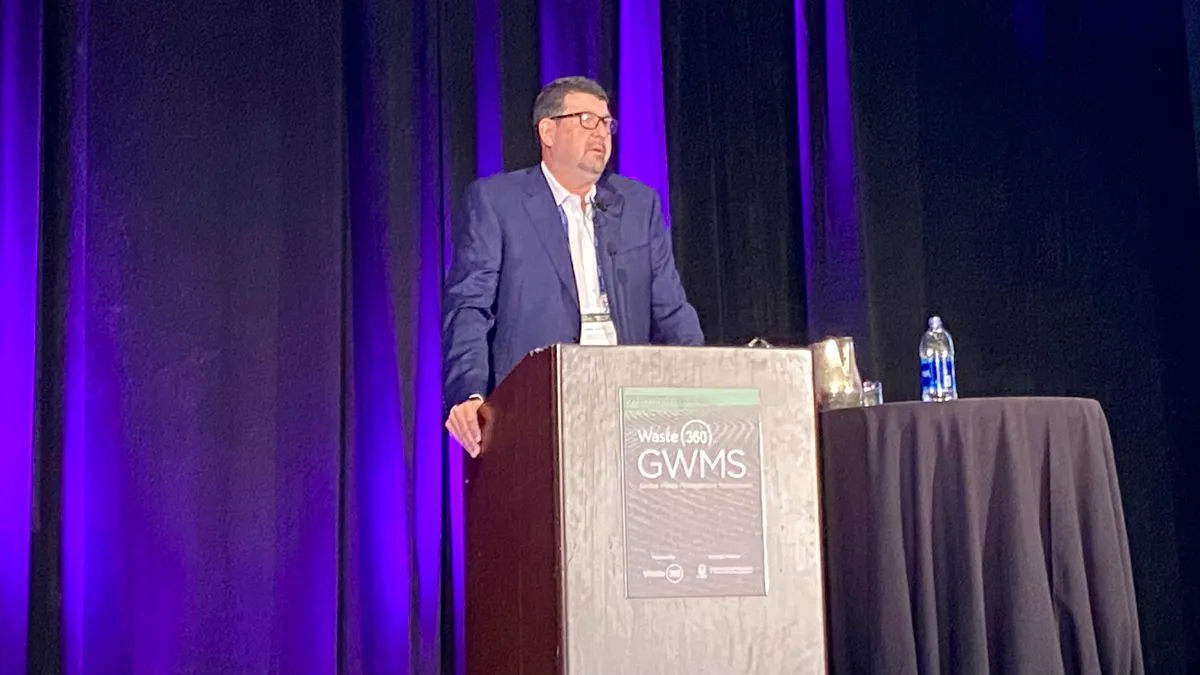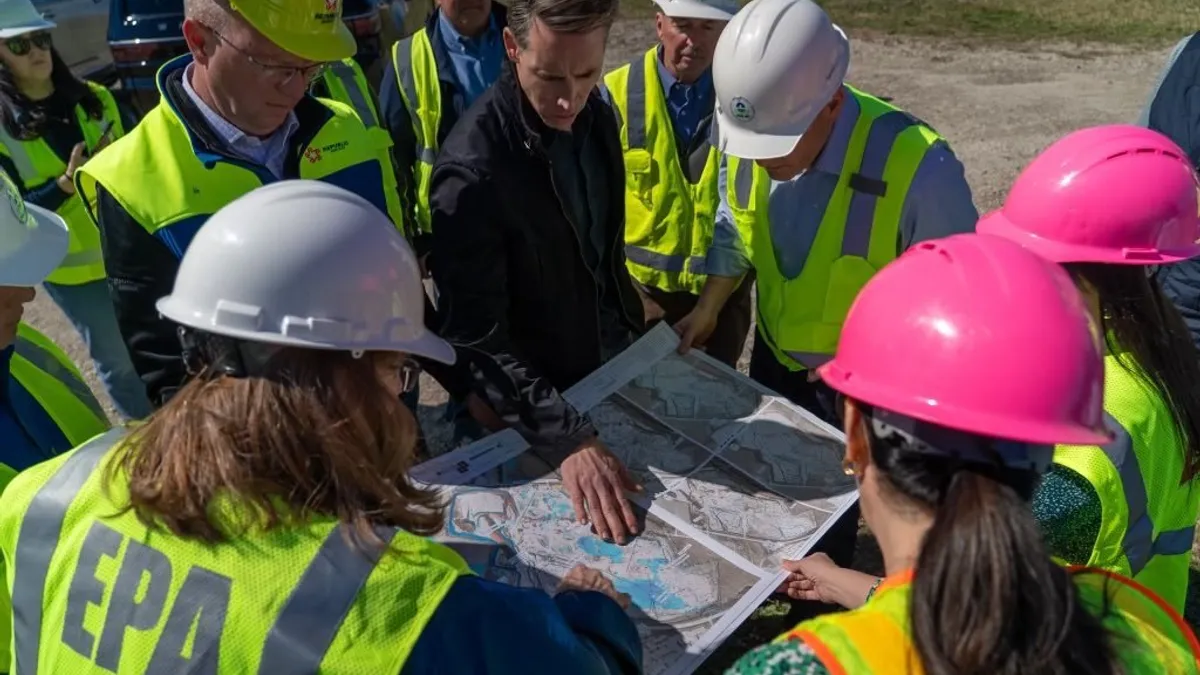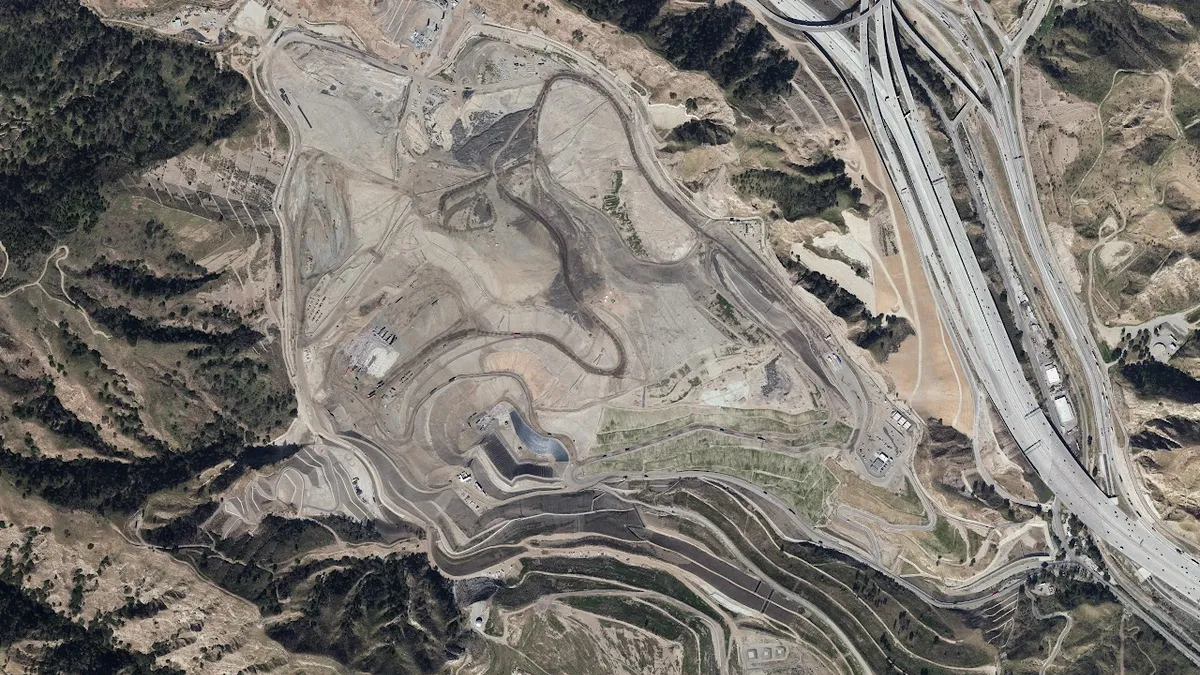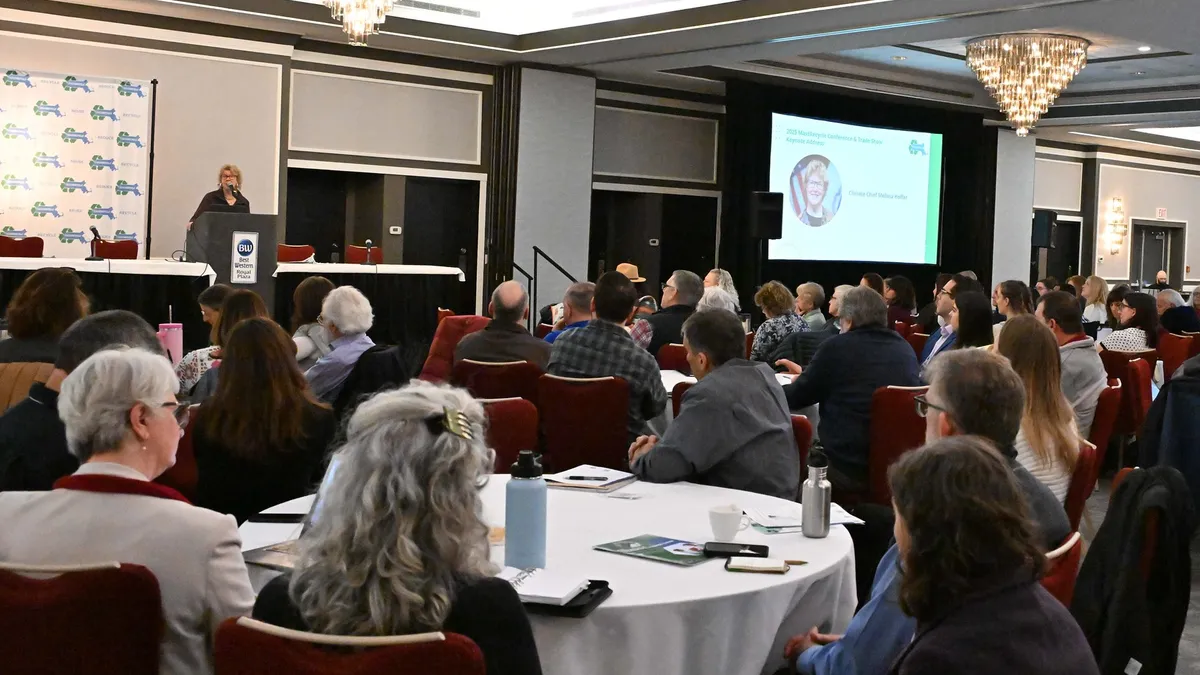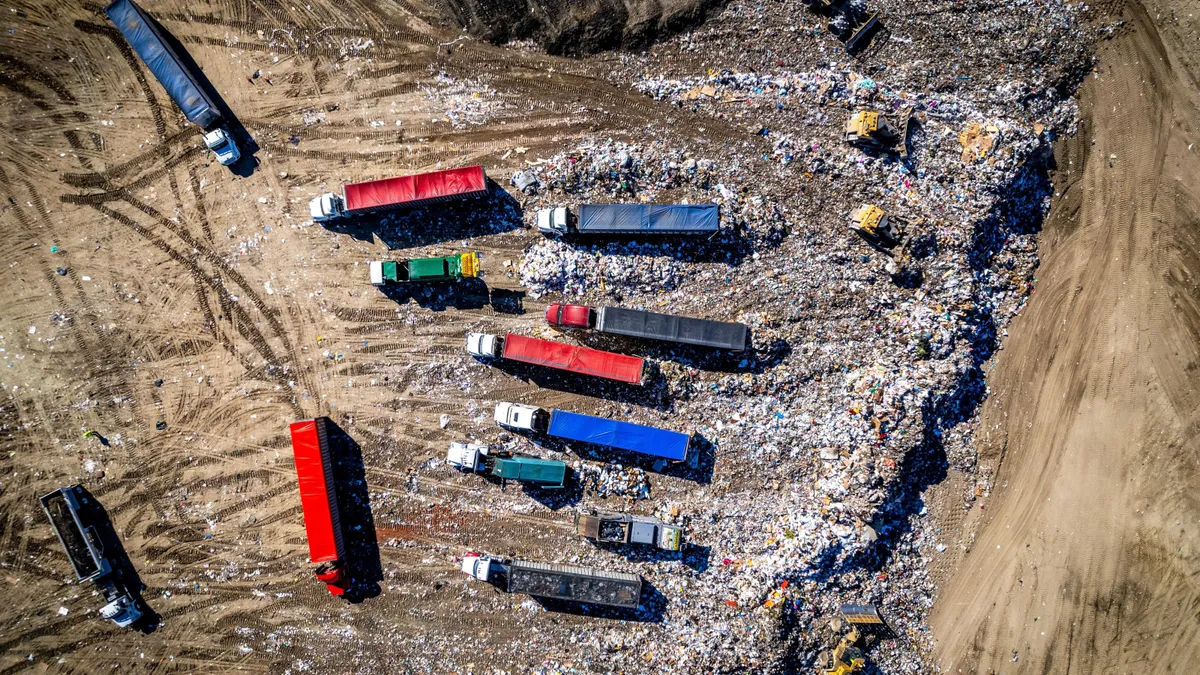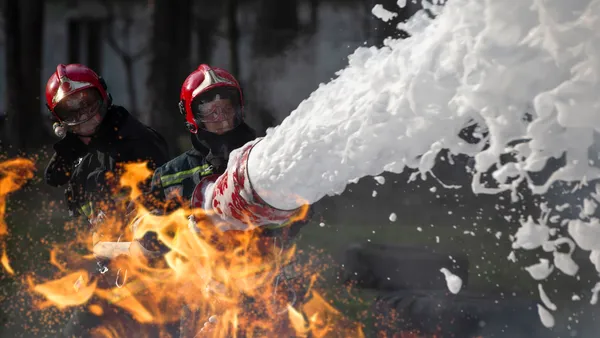INDIAN WELLS, CALIFORNIA — Despite regulatory and climate uncertainties, it's a time of opportunity for the waste industry — as long as operators are proactive about planning for the future.
That was the tone Waste Connections’ James Little set in his keynote speech at the 2022 Global Waste Management Symposium (GWMS) on Tuesday. Little, the company’s executive vice president of engineering and disposal, highlighted how Waste Connections and its peers continue to make progress toward environmental, social and governance (ESG) goals while developing infrastructure for renewable natural gas and positioning themselves to better manage PFAS.
“We’re in a very dynamic period of waste management in the evolution of this business, and it’s happening right now,” he told conference attendees.
New environmental justice and climate change regulations and considerations have “added complexity to an already complex environment” in the last few years, Little said, and the cost pressures associated with these changes will “accelerate regionalization towards larger landfills.” Instead of seeing methane as a byproduct to be managed, he said landfill operators should see it as an opportunity to develop their sites as gas production facilities through more aggressive investments in gas collection systems. “We're reducing our future emissions while maximizing renewable energy,” he said.
Little believes waste and recycling companies are more proactive than they were in years past about releasing details of their greenhouse gas emissions reduction targets and other ESG goals, but moving forward, they will need a more “uniform and transparent” process for disclosing ESG metrics.
Waste Connections’ own target is to increase emissions offsets by 50% by 2035, according to its 2020 sustainability report. A major part of that is reducing its carbon footprint at landfills, he said. In 2020, 6 million tons of carbon dioxide came from the company’s landfills — about 83% of the company’s total carbon footprint for that year, he said. Another 16% came from diesel emissions via fleet vehicles and equipment. The company has made progress in replacing diesel fleet vehicles with compressed natural gas alternatives, an area of interest for investors in particular, he said, but to make meaningful dents in its emissions goal, “the low-hanging fruit is clearly on the landfill side.”
Little says Waste Connections is tackling landfill emissions through several strategies, including plans to increase on-site renewable natural gas (RNG) production and invest in future MRF expansions. He also showcased two exposed membrane projects, one at the Seneca Meadows Landfill in New York, calling the approach a better option than simply capping part of the landfill because the membrane was easier to manage as the landfill settled. Installing an exposed membrane at one of the company's Florida landfills south of Orlando not only significantly reduced its carbon footprint but also added stormwater intrusion protection because the area experiences heavy rainfall, he said.
As landfill operators work toward ESG goals, they must also work through uncertainties about possible environmental impacts of per- and polyfluoroalkyl substances, known as PFAS. Though debates over how to manage PFAS have been ramping up for years, Little stressed that operators need to take action now, even as major questions about how to manage, treat or destroy the substances remain. “That time is already here,” he said. “I’m worried we’re behind the curve.”
He expressed a sense of urgency about the need to scale up solutions for handling PFAS, calling out for help from researchers, technology companies and others in the audience who could determine “how effective landfilling is, and how significant migration pathways like stormwater, landfill gas, [and] leachate, can be for PFAS to get out of the landfills we have,” he said.
Little expects public and private wastewater treatment works to become “less and less available” once the U.S. EPA sets drinking water and surface water standards. This has prompted Waste Connections to develop its own on-site treatment and disposal options for leachate, he said. He noted that some projects are “placeholders” for anticipated new technologies that can better manage PFAS. “We need more cost-effective and scalable treatment technology, and we need it fast,” said Little. The EPA’s interim guidance for PFAS disposal or destruction has not offered definitive rules for the best methods or approaches.
When an audience member asked if waste companies are ready to implement such solutions, or if they will “sit back and wait” for federal or state regulations to prompt changes, Little responded that Waste Connections and other operators have expressed a hunger for reliable PFAS management techniques.
“We need that solution now. Whatever works best, I’m agnostic: If it’s deep-well injection, if it’s evaporation, that’s fine with me. But we need scalable technology very, very soon.”
Several sessions at this year's GWMS also addressed how to manage, treat, store or destroy PFAS at different stages of its presence in waste management applications. Speakers and researchers echoed Little’s call to action, saying they share the aim of rapidly bringing new and reliable solutions to the table as the EPA and other agencies continue to work on possible regulations.
The growing conversations around how environmental justice impacts the waste industry pose another anticipated operational challenge. Little said environmental justice regulations could be “an encumbrance to developing new landfills,” but other GWMS speakers said the waste industry must prepare to integrate community stakeholder conversations and other EJ efforts into permitting and planning facilities. New Jersey has begun enforcing parts of a new law meant to give overburdened communities more say in how some facilities operate in their neighborhoods, and the industry expects other states to pass similar legislation.
However, Little remained optimistic that today’s changes will result in “a very, very sustainable industry going forward."



